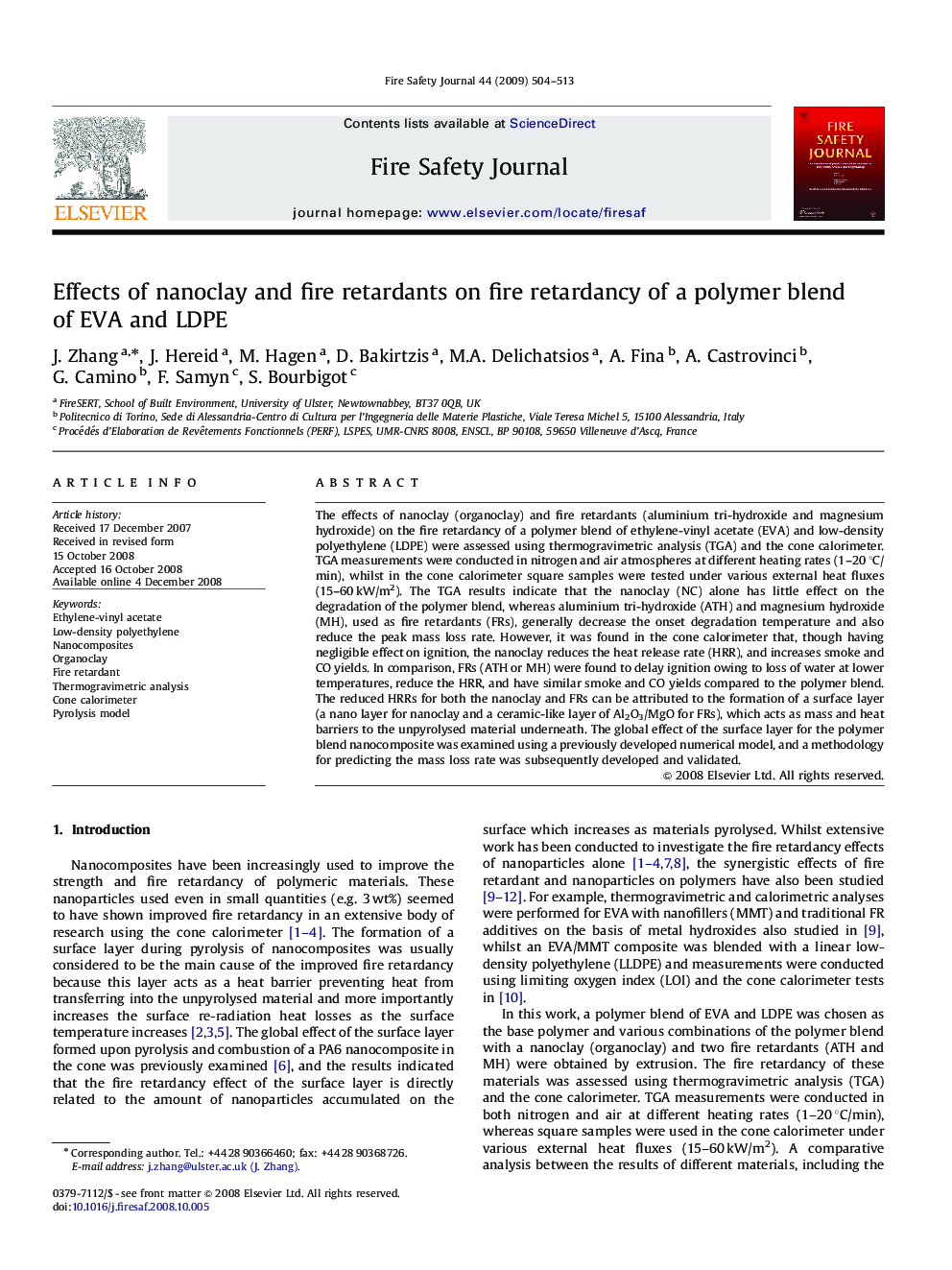| Article ID | Journal | Published Year | Pages | File Type |
|---|---|---|---|---|
| 270432 | Fire Safety Journal | 2009 | 10 Pages |
The effects of nanoclay (organoclay) and fire retardants (aluminium tri-hydroxide and magnesium hydroxide) on the fire retardancy of a polymer blend of ethylene-vinyl acetate (EVA) and low-density polyethylene (LDPE) were assessed using thermogravimetric analysis (TGA) and the cone calorimeter. TGA measurements were conducted in nitrogen and air atmospheres at different heating rates (1–20 °C/min), whilst in the cone calorimeter square samples were tested under various external heat fluxes (15–60 kW/m2). The TGA results indicate that the nanoclay (NC) alone has little effect on the degradation of the polymer blend, whereas aluminium tri-hydroxide (ATH) and magnesium hydroxide (MH), used as fire retardants (FRs), generally decrease the onset degradation temperature and also reduce the peak mass loss rate. However, it was found in the cone calorimeter that, though having negligible effect on ignition, the nanoclay reduces the heat release rate (HRR), and increases smoke and CO yields. In comparison, FRs (ATH or MH) were found to delay ignition owing to loss of water at lower temperatures, reduce the HRR, and have similar smoke and CO yields compared to the polymer blend. The reduced HRRs for both the nanoclay and FRs can be attributed to the formation of a surface layer (a nano layer for nanoclay and a ceramic-like layer of Al2O3/MgO for FRs), which acts as mass and heat barriers to the unpyrolysed material underneath. The global effect of the surface layer for the polymer blend nanocomposite was examined using a previously developed numerical model, and a methodology for predicting the mass loss rate was subsequently developed and validated.
